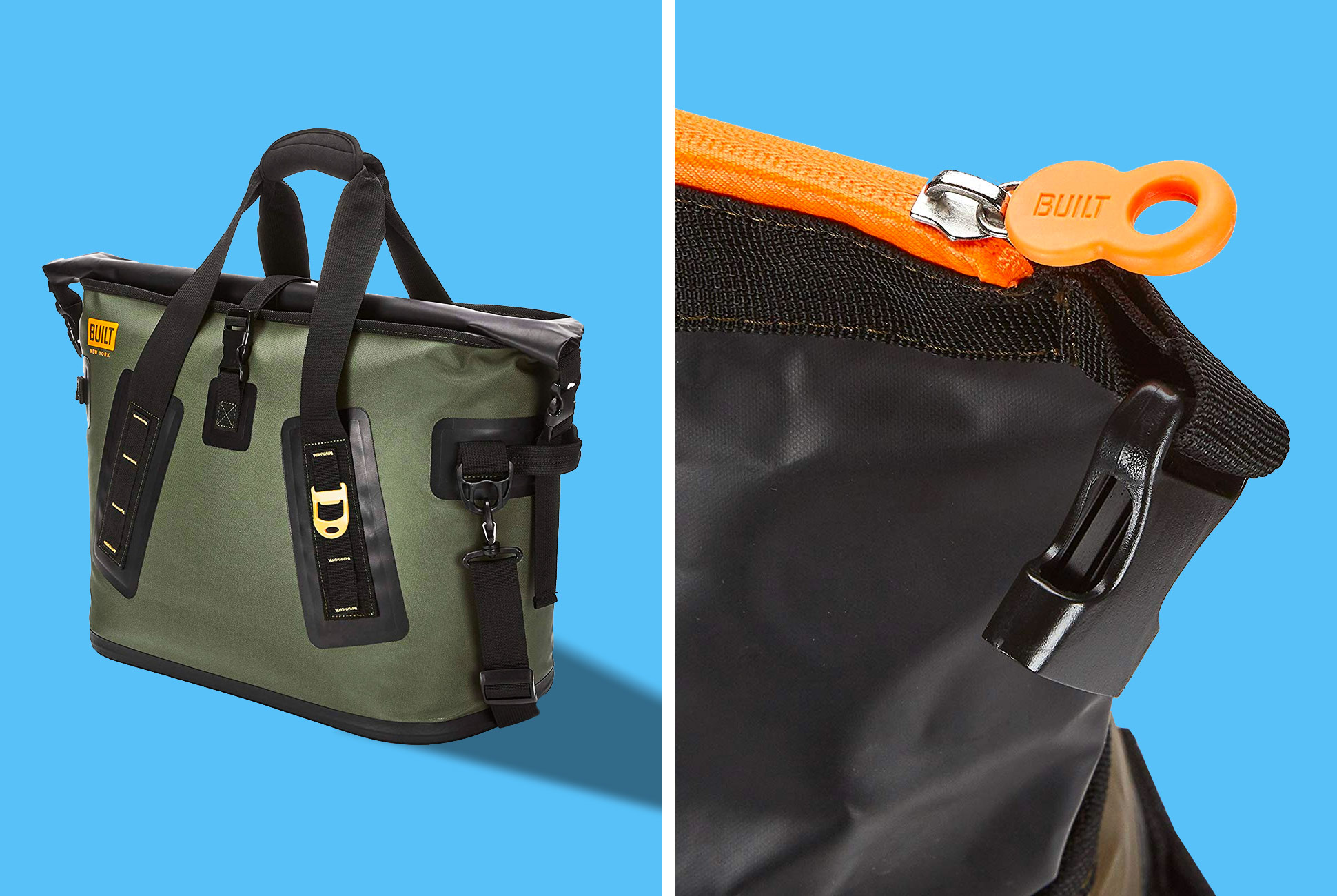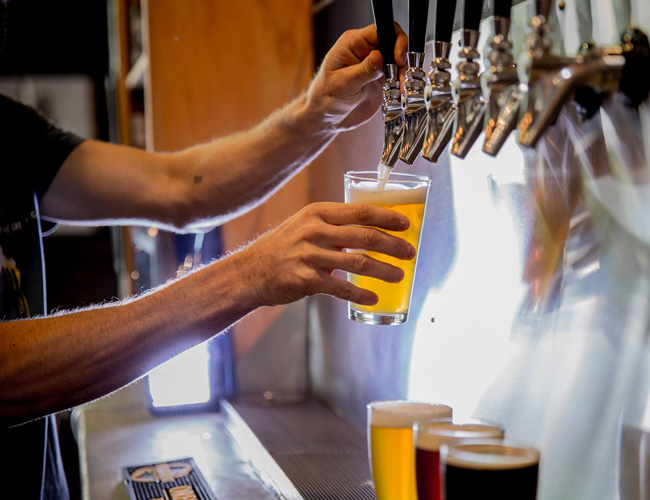Last updated May 2019: We updated our guide to the best coolers available with new picks. Links and prices have also been updated.
Introduction
Outdoor coolers have the same adventurous spirit as those who carry them. They’re designed to be dropped, beaten, submerged and even attacked by wild animals, all while keeping their contents intact and cold for days. Whether you’re planning on taking one deep-sea fishing, big game hunting, paddling down some Class-5 rapids or simply going to a tailgate, one of these coolers is worthy of the adventure.
What Is a Rotomolded Cooler?
There’s a reason why so many of the coolers created today are tougher, heavier and more expensive than the Igloo Playmate you may have carried around in years past. The update is primarily due to a manufacturing process called rotational molding, or more commonly, rotomolding.
In rotomolding, a heated mold is filled with powdered plastic material. The mold rotates on two axes as it heats the plastic until it is completely melted and fills every cavity within the hollow mold. The constant rotation helps the plastic resin spread evenly and consistently throughout. The result is a single-piece plastic cast of the desired shape that’s free of any imperfections. Rotomolding contributes to all of the traits that represent the current level of quality in today’s coolers, most importantly rugged durability and superior ice retention.
How To Pick the Right Size For You
Hmm… 20-, 30-, 40-quart — knowing what each size cooler can hold can be tricky. While the shape makes a difference, especially in the soft-sided coolers, here’s what we tended to see. A 70-quart size tends to be the most family-friendly, and the smaller soft-sided coolers are perhaps better for a tailgate or drinks for a group. Keep in mind, the larger the cooler, the heavier it will be, especially when filled with food and drink. If you’re traveling with friends or family, that’s not a problem. Here’s what we gathered as general guidelines after our research. Most of the brands measure the capacity at a two-to-one ratio, meaning two parts ice, one part can, but some don’t. So take measurements with a grain of salt.
20 Quart: holds roughly 16 cans or 20 pounds of ice
35 Quart: holds roughly 21 cans or 26 pounds of ice
50 Quart: holds roughly 35 cans or 43 pounds of ice; ideal for two people for a few days
75 Quart: holds roughly 57 cans or 70 pounds of ice; ideal for two people for a week-long trip, or a family weekend trip
How To Get the Most Out of Your Cooler
In order to get the most out of your cooler, make sure to pre-chill it for 24 hours before you pack it up and head out. Pre-chilling involves adding ice to your cooler to bring the internal temperature of the cooler down. When you’re ready to pack the cooler the following day, dump the ice you added for pre-chill and add new ice to the cooler. The new ice will stay frozen longer and will give you extended performance in the realm of cold retention.
How To Pack Your Cooler Correctly
The truth is, you can pack these coolers in virtually any configuration and they will all still perform far and above what you’ve used up to this point. But to get the best ice retention possible, keep the following easy tips and tricks in mind.
Line the bottom of your cooler with ice. Putting a layer of ice on the bottom of your cooler will keep the ice colder longer and also keeps it away from the least-insulated part of the cooler, the lid.
Fill your cooler with solid blocks of ice if possible. Solid blocks of ice stay frozen longer than ice cubes.
Fill the gaps with ice cubes. Pour a bag’s worth of ice cubes on top of your ice blocks to fill any gaps or holes.
Add your food, beer or both. Lay out your supplies in a manner that makes sense. In other words, don’t just toss everything in. Keep your morning meals on one side and your evening meals on the other side. This will ensure that you spend minimal time with the cooler open (allowing hot air inside).
Fill the rest of the cooler with ice cubes or ice packs. Top off with some additional ice and you’re good to go. To keep it chilled as long as possible, only open the cooler when absolutely necessary.
Related Video: Yeti LoadOut GoBox 30 First Look
Watch more of This Week In Gear video reviews.
The Best Coolers of 2019
Editor’s Pick Best Hard Cooler: Yeti Tundra Haul
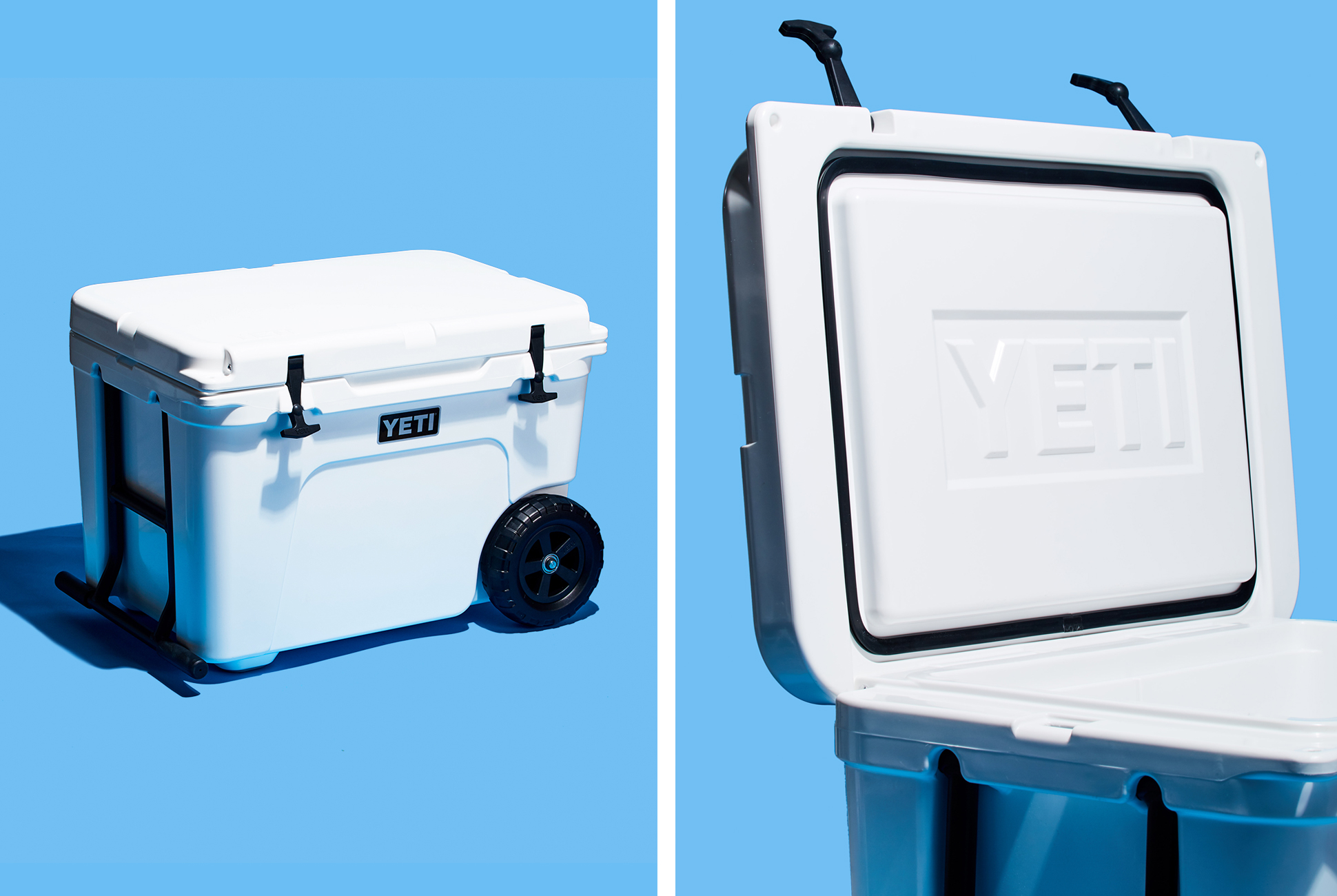
In testing the Yeti Tundra Haul cooler, I was impressed by Yeti’s attention to detail (but then again I shouldn’t be surprised after putting the Hondo camp chair through a thorough test). Yeti could have simply slapped wheels on a Tundra and called it a day. But it didn’t. Yeti agonized over every aspect of how the wheels and handle would integrate into the design to the point that I was asking myself “Is all of this really necessary?” But it is necessary, because that’s who Yeti is. In fact, the handle was designed so that it doesn’t slam against the hard plastic if you drop it. And the wheels roll so quietly and smoothly that you’ll wonder why you ever used any other cooler.
Perhaps the most impressive feature (and of course the most important) is how Yeti integrated the wheels into the design. It managed to retain space on the interior of the cooler without too many awkward bumps. Other wheeled coolers on the market fail to do this as sleekly as Yeti did. At the end of the day, the Tundra Haul was a no-brainer for Yeti. It was only a matter of time before the brand launched a wheeled cooler, and we’re glad that it’s finally here. — AJ Powell
Sizes available: 45 cans of beer or 55 pounds of ice.
Editor’s Pick Best Soft Cooler: Orca Podster
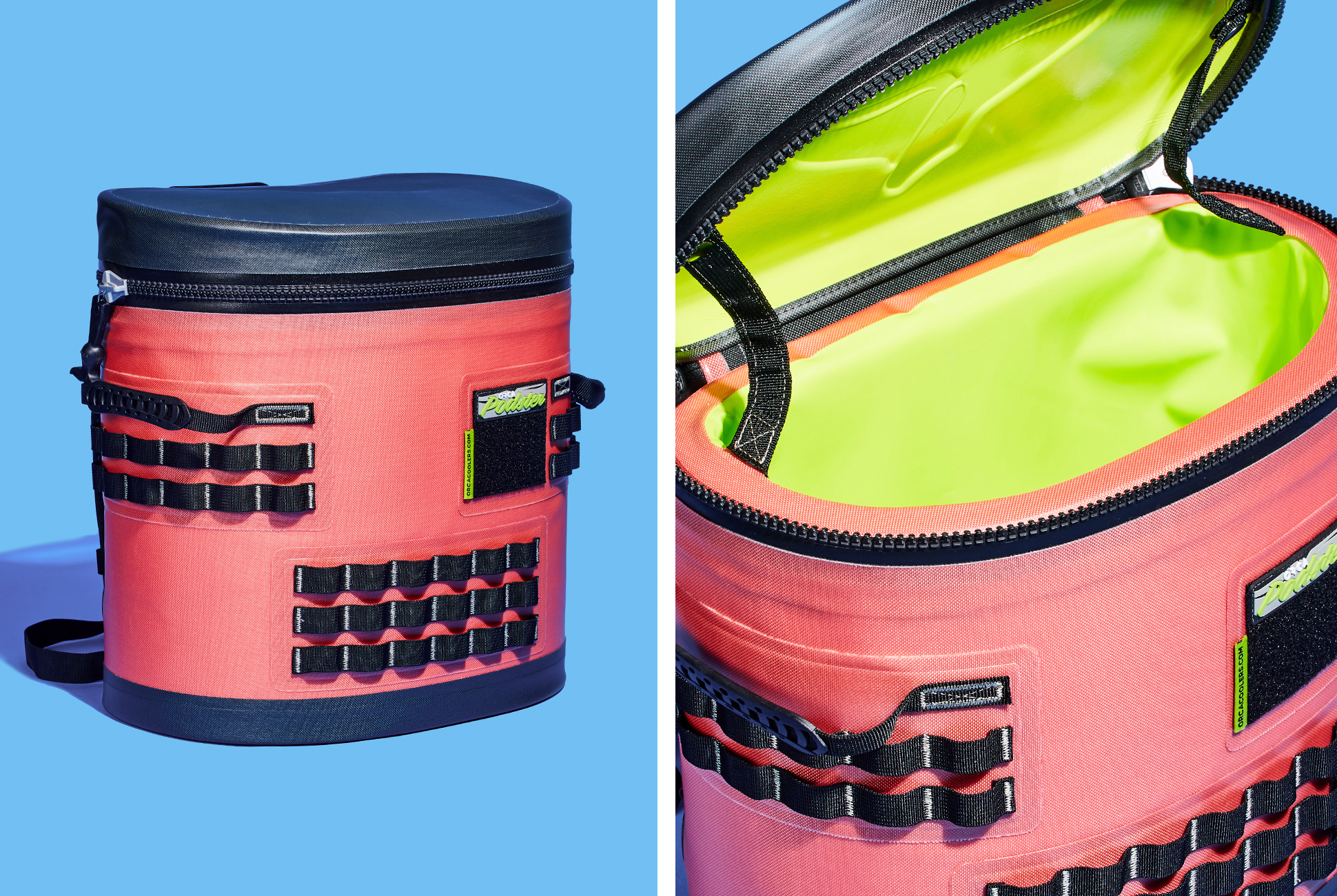
In truth, Orca’s Podster is a bit of an odd ball in the soft coolers category. It’s an unconventional shape, and though it has backpack straps, its bulk does little in terms of a spacious interior. That said, all of that foam keeps everything you toss in it cold right up there with the other coolers on this list. The body is constructed using the same RF welding that’s used in whitewater rafts, it’s FDA food-grade safe and it features an ultra-durable and ultra-waterproof TIZIP zipper.
It also comes in a variety of colorways including the Coral/Gray pictured here. Unlike Orca’s other coolers, this one isn’t made in the USA, but it still lives up to the brand’s performance and reputation. — AJ Powell
Sizes available: 14.25 quarts
Editor’s Pick Best Disposable Cooler: Igloo Recool Cooler
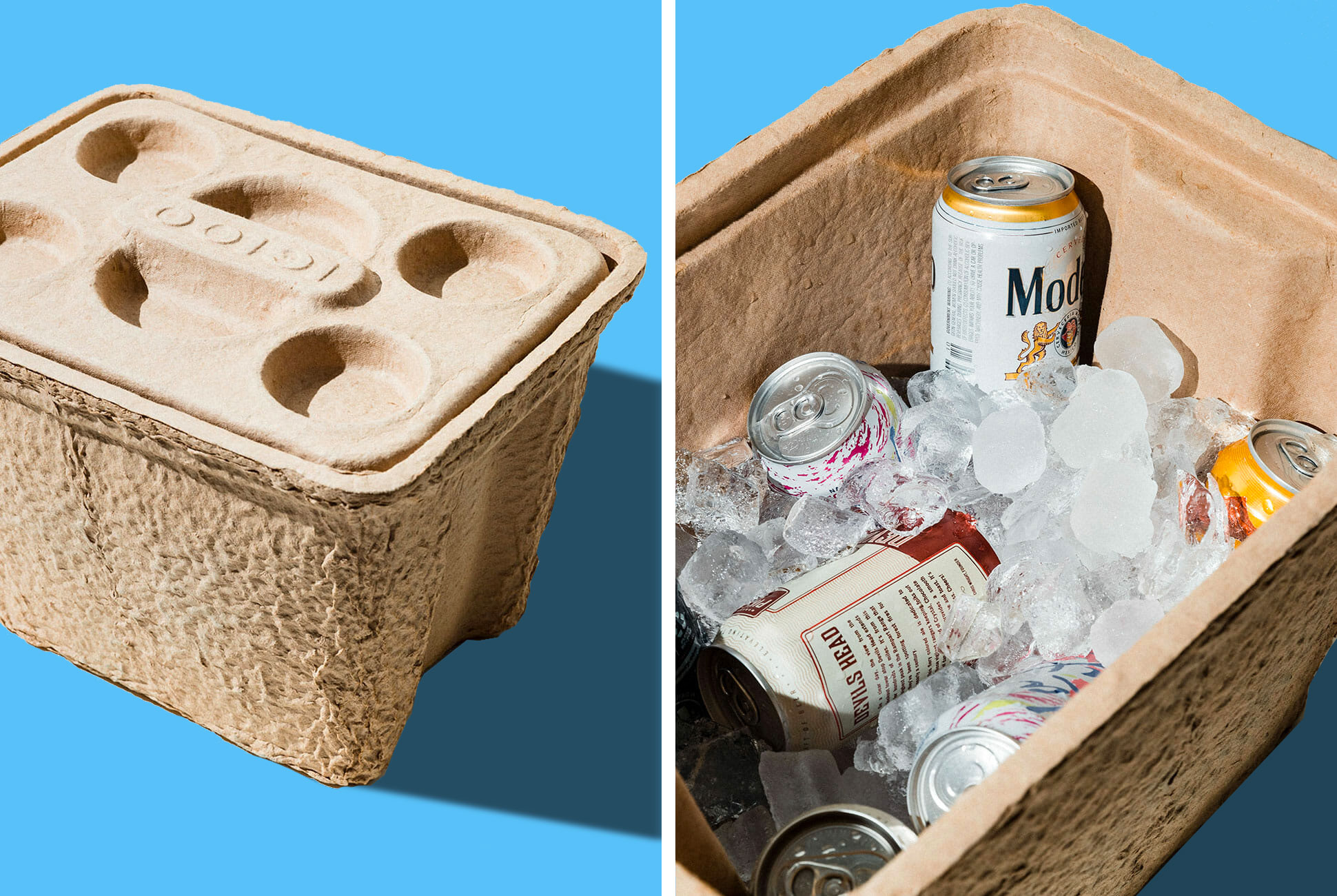
At $10, Igloo’s Recool is by far the cheapest cooler on our list. Its 16-quart capacity is small — ideal for a day trip but probably not an overnight — too. Also, while every other cooler here is nigh indestructible, the Recool is markedly destructible; it’s made of molded pulp that’s biodegradable.
The Recool doesn’t replace Yetis or OtterBoxes anyway; it replaces those cheap styrofoam coolers you buy last minute at a gas station or grocery store before heading to the beach or a music festival. Igloo claims the Recool is strong enough to carry 75 pounds (I flipped ours over to stand on it, and it didn’t buckle) and that it’ll keep ice frozen for up to 12 hours and hold water without leaking for five days. Our tests confirmed these claims (although the bottom did leak very slightly after roughly 20 hours), and even after leaving water in it for over a week, we were still able to dry it out and use it again. — Tanner Bowden
Sizes available: 16 quarts
Orca Classic
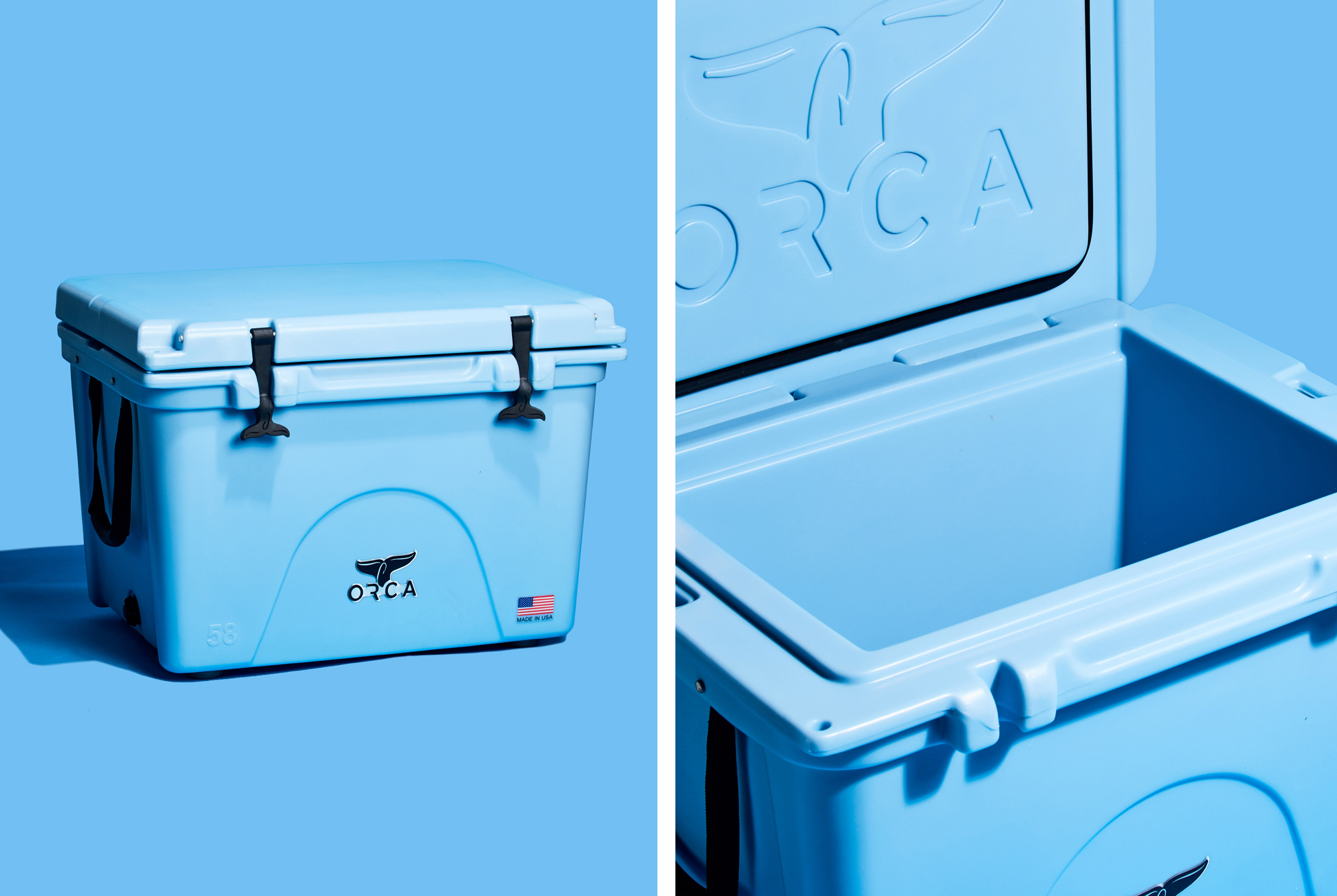
If Yeti has any serious competitor in the hard cooler space, it’s Orca. The Nashville, Tennessee-based brand makes all of its hard-sided coolers in the US and that quality shines through. The Orca Classic coolers are incredibly well made down to every last detail — including the rubber tabs that secure the lid of the cooler closed. Said tabs are shaped like whale tails, harkening back to the brand’s name and logo. They’re made from a roto-molded construction, like others on this list, and feature a lid gasket that seals out heat and locks in water and cold. The handles are by no means the best we tested, but they’re serviceable and are made from nylon webbing with rubber grips. A drainage spout at the bottom makes it easy to clean and drain after the ice has melted — but that might be a while. — AJ Powell
Sizes available: 20, 26, 40, 58, 75, 140 quarts
RovR RollR Coolers
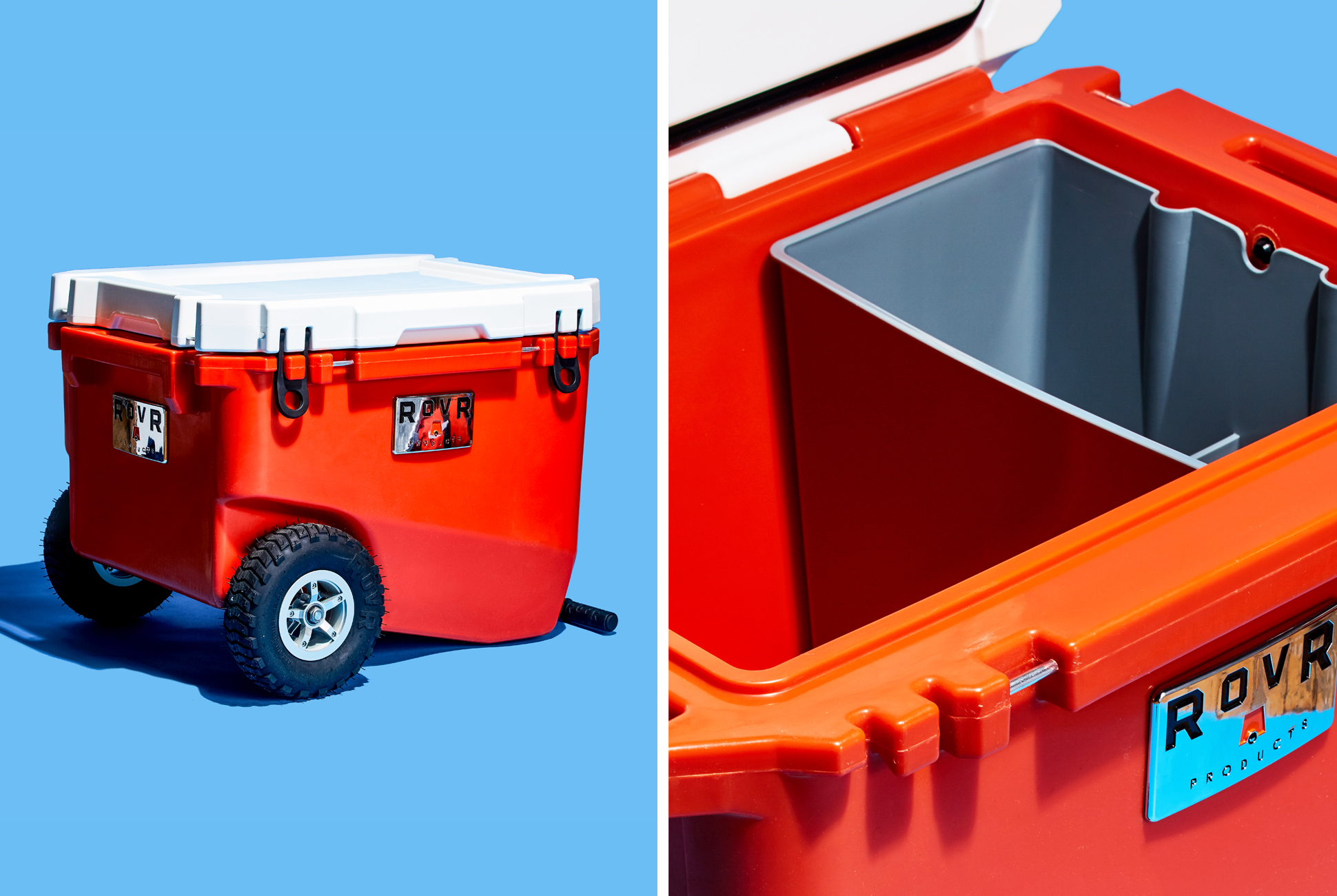
Last year, when RovR brought its RollR coolers to Kickstarter, it promised: “the most feature-packed cooler ever!” Thanks to the 580 backers who funded the project more than $100k beyond its asking goal, the RollR is now here.
While many of the other hard coolers on this list all seem to be emulating Yeti (and each other), the RollR is unique. Its shape is boxier, its finish is shinier and its interior is wholly novel; it’s stepped to accommodate the axle supporting its built-in wheels, but RovR has worked that potential flaw into the design, using the cavity to create a slot for its removable dry storage container. It claims to keep ice frozen for ten days, a duration that has become industry standard, with a roto-molded construction.
The RollR, like OtterBox’s Venture, earns much of its rank due to its potential for customization. The dry storage already mentioned above is a great organization feature that makes packing for a multi-day camping trip compact and organized. The RollR also can hold a prep board, cup holder and other small accessories. One unique add-on is a collapsible bin that sits on top of the cooler when closed, which can hold things like beach towels, clothing or any other supplies that are easier rolled than carried. The RollR also can rig up behind a bicycle with an extra attachment.
Those looking for specific use options will probably opt for less customization, more space and a lighter package; the RollR is comparatively heavy. But it’s also a great cooler that opts for fun instead of intensity, and stands up to the rest of this list all the same. — Tanner Bowden
Sizes available: 60, 80, 85 quarts
Bison GEN2 Hard Cooler Line
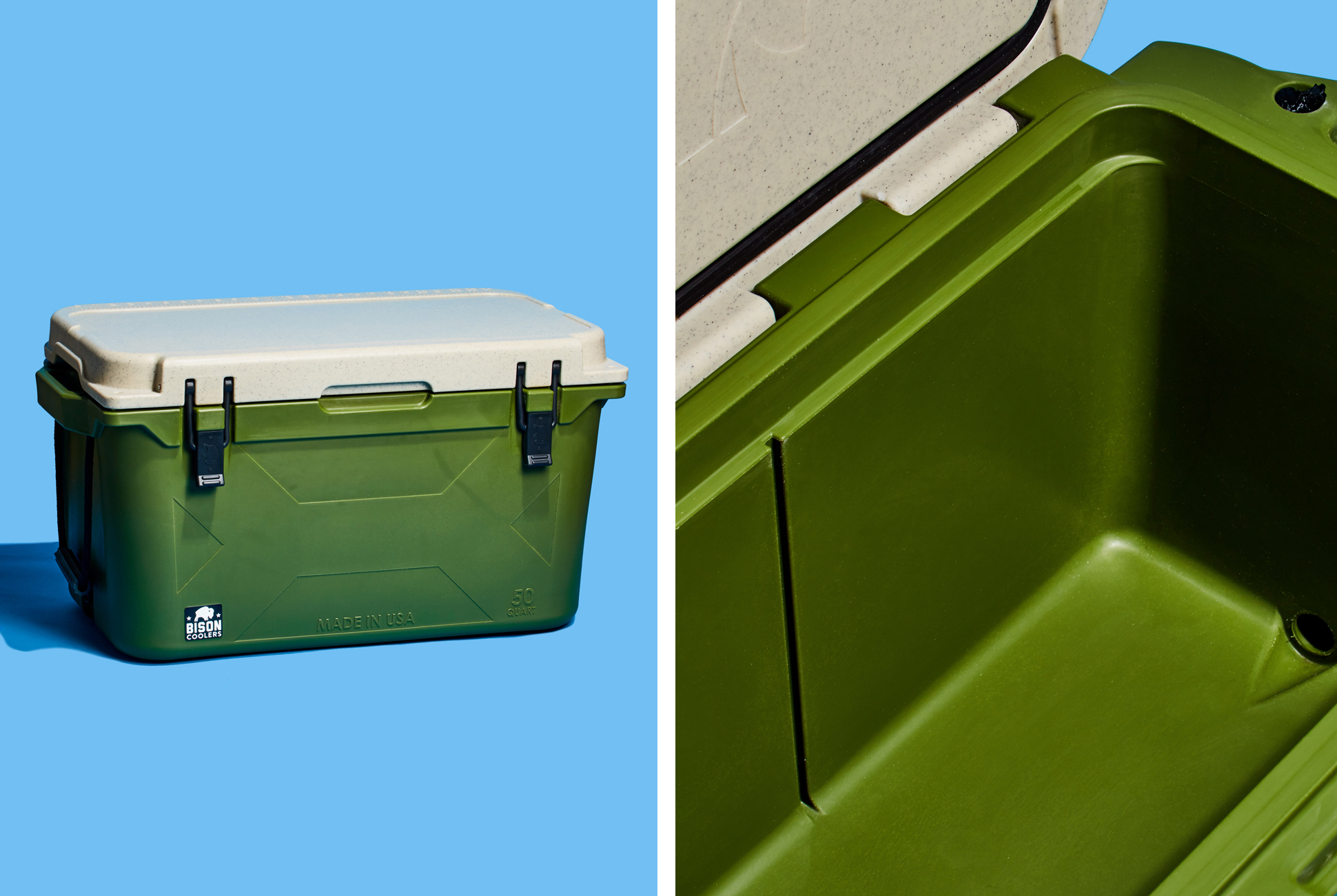
Made in America, this heavy-duty roto-molded cooler has pressure-injected insulated walls and a double-walled silicone gasket to keep ice crispy for days. The two drain plugs are larger than those of the Gen1 — roughly the same size as the ones found on an Orca cooler, and bigger than the ones on Yetis — making cleanup a breeze. The hefty latches are bigger than past models and super secure. Plus, each Bison cooler comes with a five-year warranty. Bring this one fishing or boating and you’ll have an easy time keeping the day’s catch on ice. — Meg Lappe
Sizes available: 25, 50, 75 quarts
OtterBox Venture Cooler
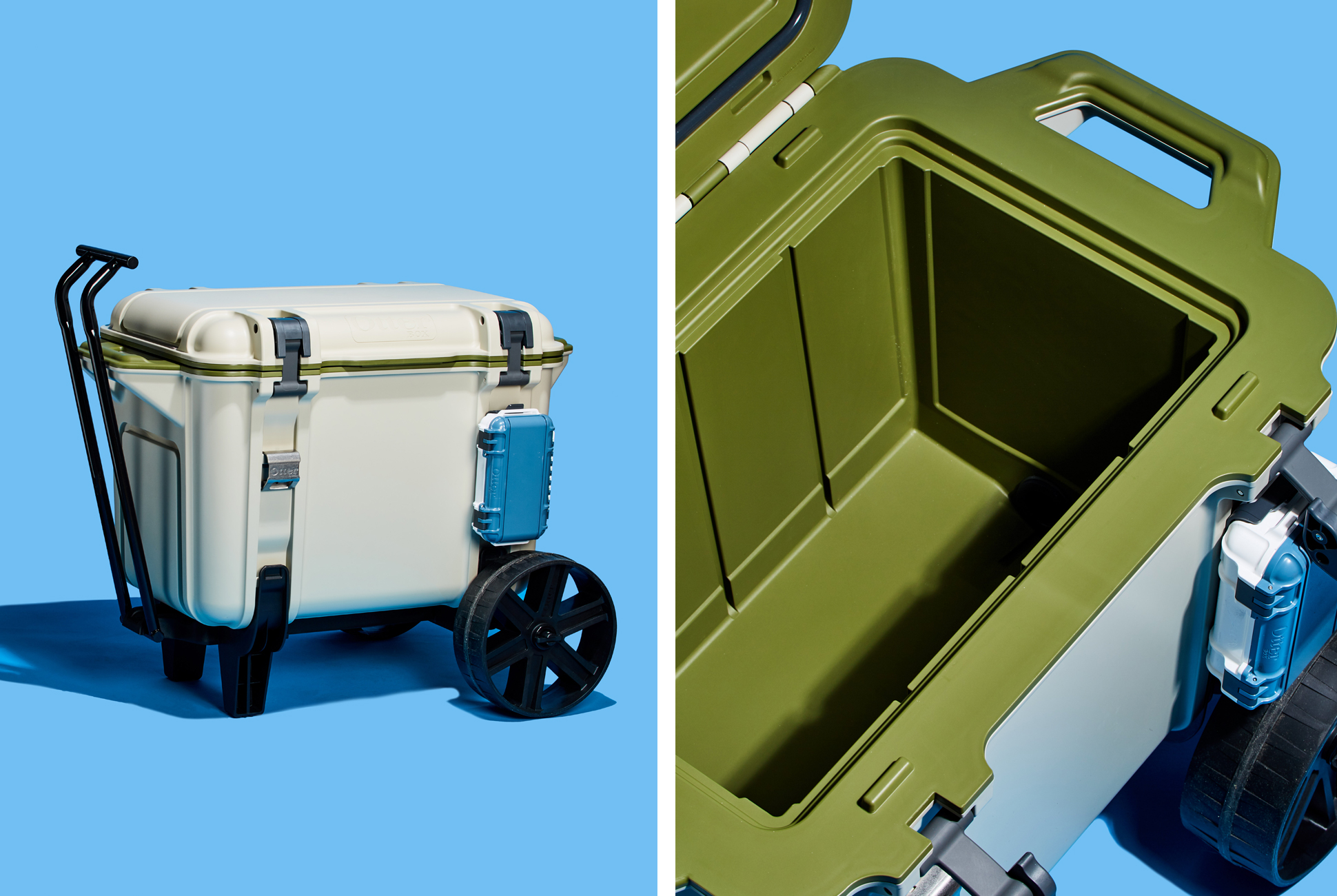
OtterBox’s move into the cooler category began last summer with the release of the Venture series. It may come as a surprise to those who recognize the brand from its domination of Best Buy’s phone case racks, but among the company’s first products were protective dry boxes.
Does tech protection translate into making coolers? As it turns out, it does. OtterBox integrated rugged injection-molding and high-grade cooling technologies into its first cooler and brought the Venture straight to the front of the pack. The Venture comes in 25-, 45- and 65-quart sizes and is rated to hold ice for up to two weeks. More minute details include anti-slip rubber feet and a bottom that’s slanted just enough to make draining easier. Plus, as you’d expect from OtterBox, this thing has been dropped from every angle and on every side to ensure that it can’t be damaged, empty or full.
The Venture separates itself from the rest with an array of customizable, modular attachments. Its front has two clips that can hold a bottle opener, cup holder or one of those dry boxes I mentioned earlier. Inside, the cooler can be arranged with separators to create compartments for wet and dry goods, and it can also take on a cutting board and side table. This system sets up the Venture for future success by allowing OtterBox to continue to release components that will increase its utility. Case in point: OtterBox recently revealed its All-Terrain Wheels chassis (pictured above), a $250 add-on that makes the Venture immediately more portable — and you can always detach it later for, say, a rafting trip. The Venture may be slightly less sleek than some of the other hard coolers on this list, but it stands up to all the standards of rugged durability and, of course, keeping things cold. — Tanner Bowden
Sizes available: 25, 45, 65 quarts
Pelican Elite 50 QT Cooler
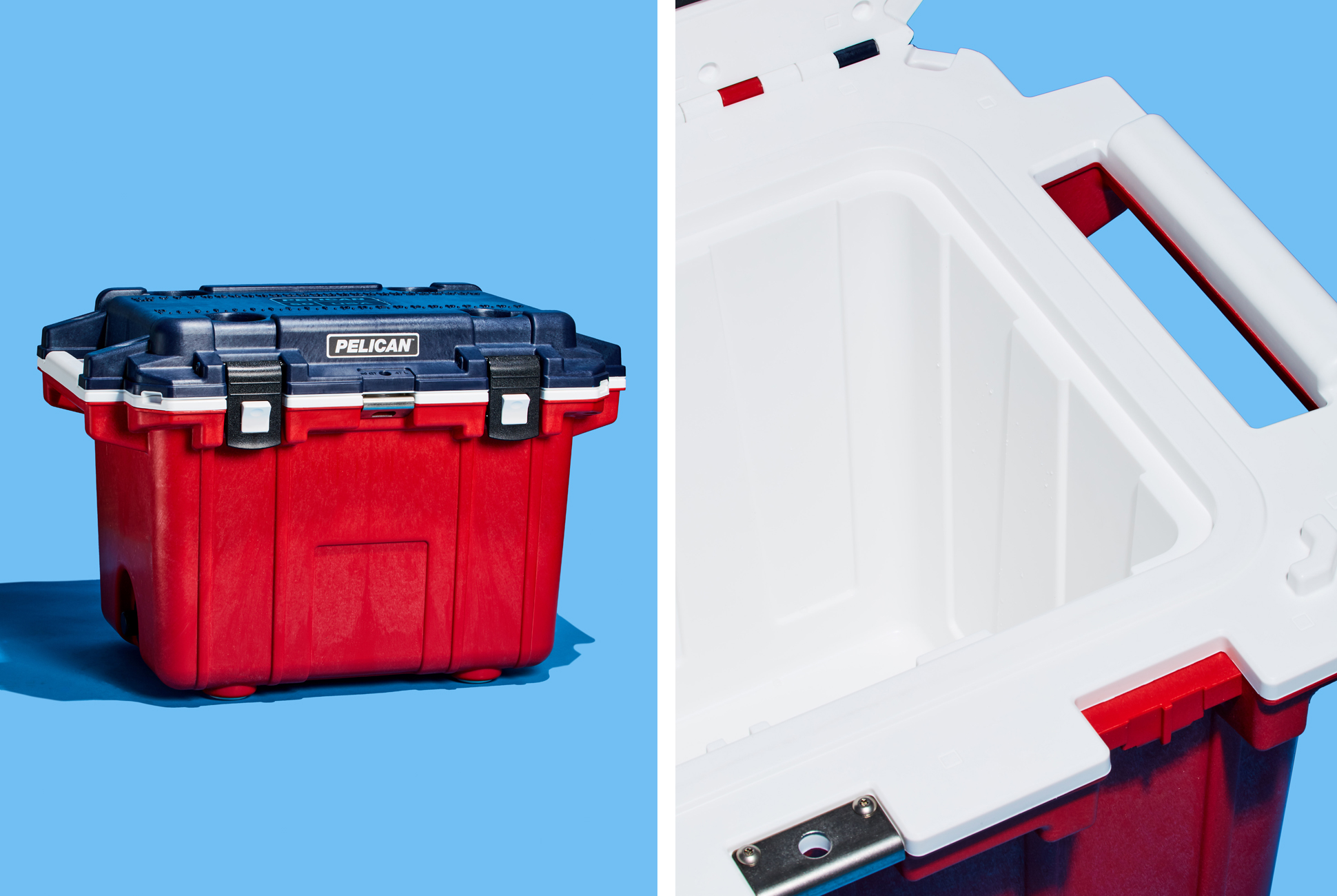
Coolers don’t get much more American than this one. Stash fish, meat, water or beer in the Elite, which holds three to five days worth of food and drink. It’s lightweight and features the same burly latch design Pelican uses on its heavy-duty camera cases. There’s also a built-in bottle opener along the lid-lining. Plus, four molded-in can holders give you the perfect spot to rest your drink if you have to man the grill or grab a line. It’s also guaranteed for life, so it can be the last cooler you ever buy. — Meg Lappe
Sizes available: 20, 30, 50 quarts
Hydro Flask Unbound Cooler Pack
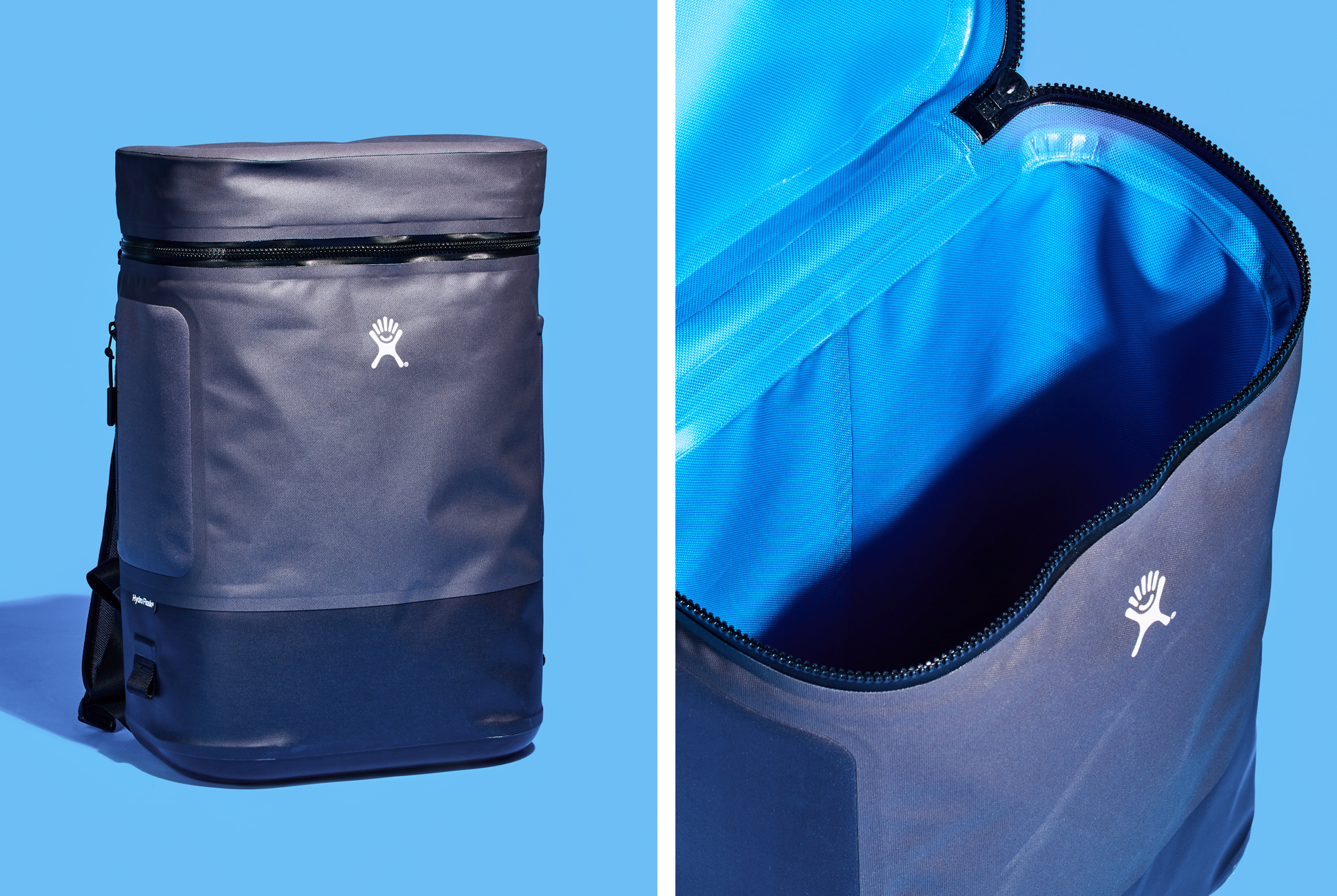
Hydro Flask’s success in creating insulated water bottles that look great and work to keep beverages cold (or hot) for extended periods of time signals that the brand has a particular knack for insulation. Getting into the cooler category was a logical next step, and its Unbound Series matches its drinking vessels in both style and function.
Hydro Flask’s Cooler Pack is, without question, the prettiest soft cooler of the group that we tested. It’s sleek, with exterior pockets for things like keys or a wallet that don’t impede its design or add unneeded bulk. The cooler uses a watertight construction that keeps water in and out with an Aquaseal zipper and is equipped with an FDA-approved, food-grade liner and enough soft insulation to keeps contents cool for up to 48 hours. It has a 22-liter capacity — or enough space for 24 cans.
Because it’s a backpack, the Unbound can’t merely look good; it has to be comfortable enough to wear, fully loaded, on jaunts that are too long to haul something bigger. We found this to be the case, though you won’t want to wear it on extra-long treks; stick to trips to the beach and park or shorter hikes. — Tanner Bowden
Sizes available: 22 liters
OtterBox Trooper
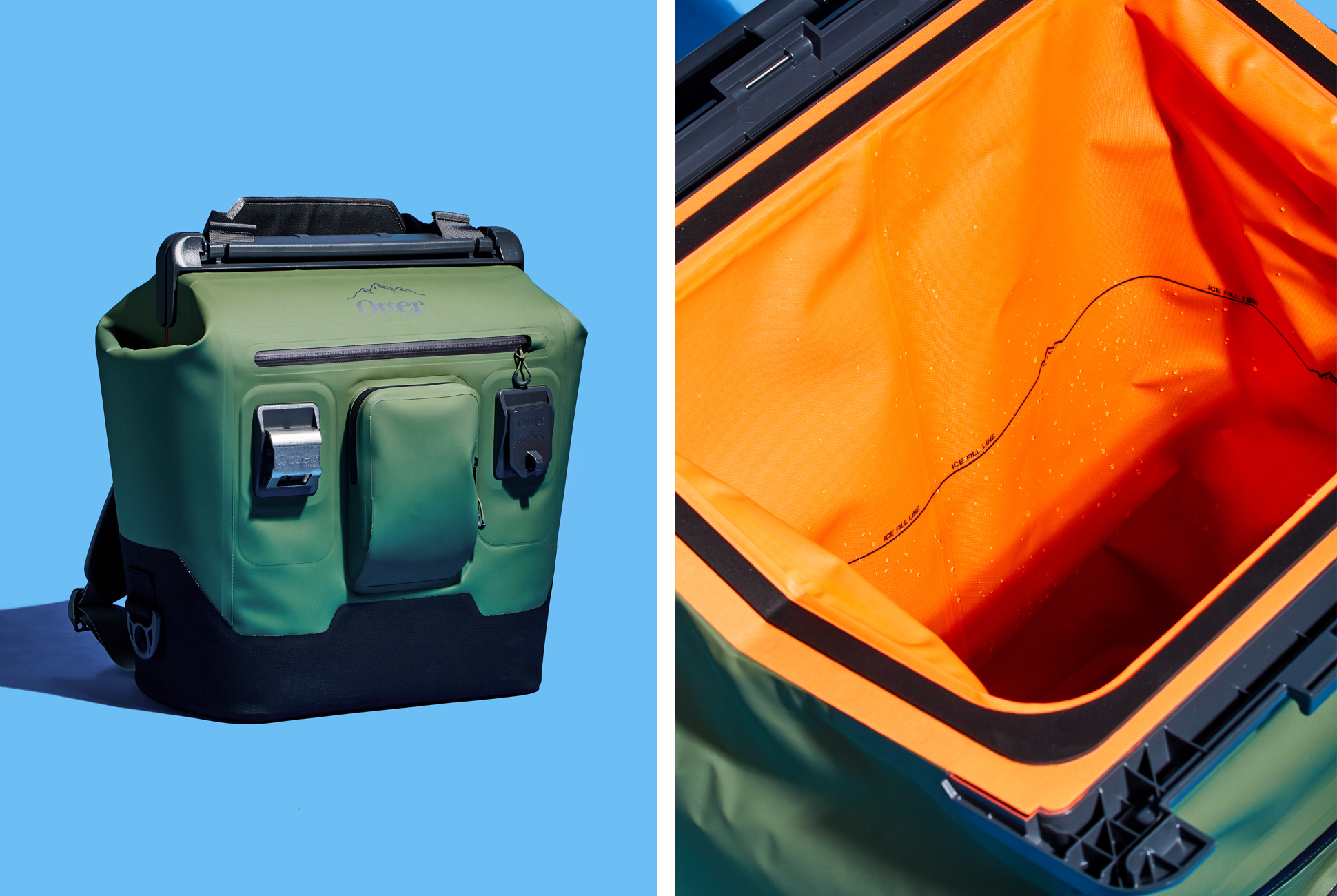
Once OtterBox made the jump from rugged phone cases to rugged coolers, it was only a matter of time before the Colorado-based company introduced a line of soft coolers. It did precisely that at the start of this year with the Trooper series.
The Trooper series includes two soft-sided coolers. Both are IP-65-rated, which means they’ll keep out dust and the inadvertent splash of water. The Trooper coolers feature wide-mouth, one-handed-access openings made of plastic and exterior shells made of durable nylon that is resistant to water, UV damage, chemicals and punctures. The bases are laminated to be abrasion-resistant. Inside, the liners are food-grade.
The bigger Trooper 30 comes with backpack straps, which we felt provided the most comfortable carry of any of the soft coolers we tested. Another note to make regarding the Trooper is that its clamshell opening is the widest, and provides the most access, of all the soft coolers — no pulling a bunch of stuff out to get to the last La Croix at the bottom. The Trooper’s plastic opening does seem like it might be prone to breaking, but we honestly haven’t beaten it up enough to tell for certain. As far as keeping contents cold though, the Trooper was one of the best performers in our ice test. — Tanner Bowden
Sizes available: 20, 30 quarts
Yeti Hopper Flip
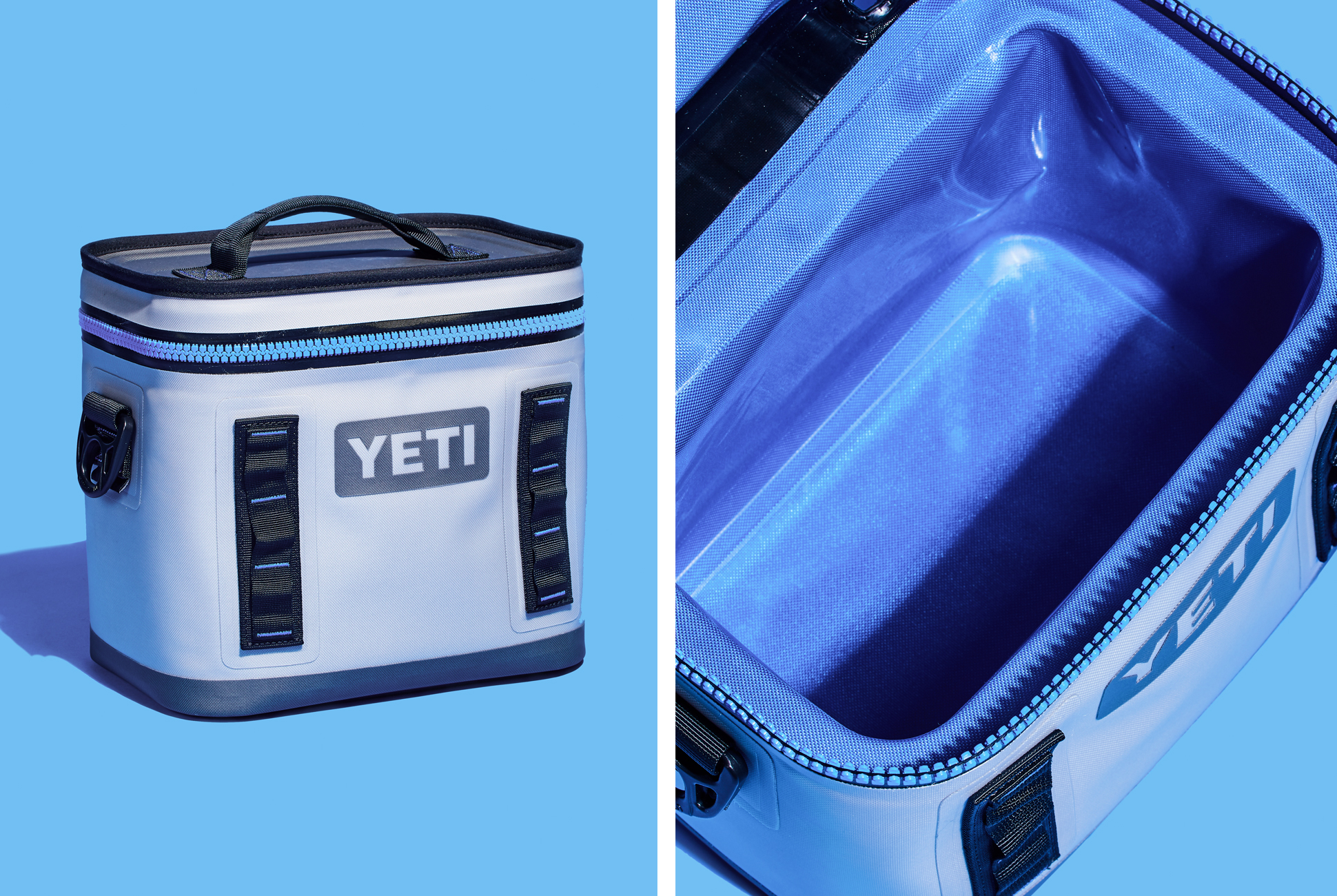
Yeti is the king of rugged coolers, and when the brand launched the Hopper Flip 8 in July of 2016, it brought that title to a new category: lunchboxes. There simply isn’t a more over-built, rugged, lunch-worthy lunchbox out there. Sure, it may be a bit excessive to spend $200 on a lunch box, but considering it will last you upwards of ten years (that’s no exaggeration), it’s definitely worth it. And it can do more than just hold your lunch too. The Hopper Flip is a great size to bring fly fishing, and can keep both your beer and your catch plenty cold. One Gear Patrol editor has even been known to bring one on backpacking trips to keep perishables cold in the backcountry. You take a weight penalty, but it’s well worth it. — AJ Powell
Sizes available: 8, 12, 18
IceMule Coolers Boss
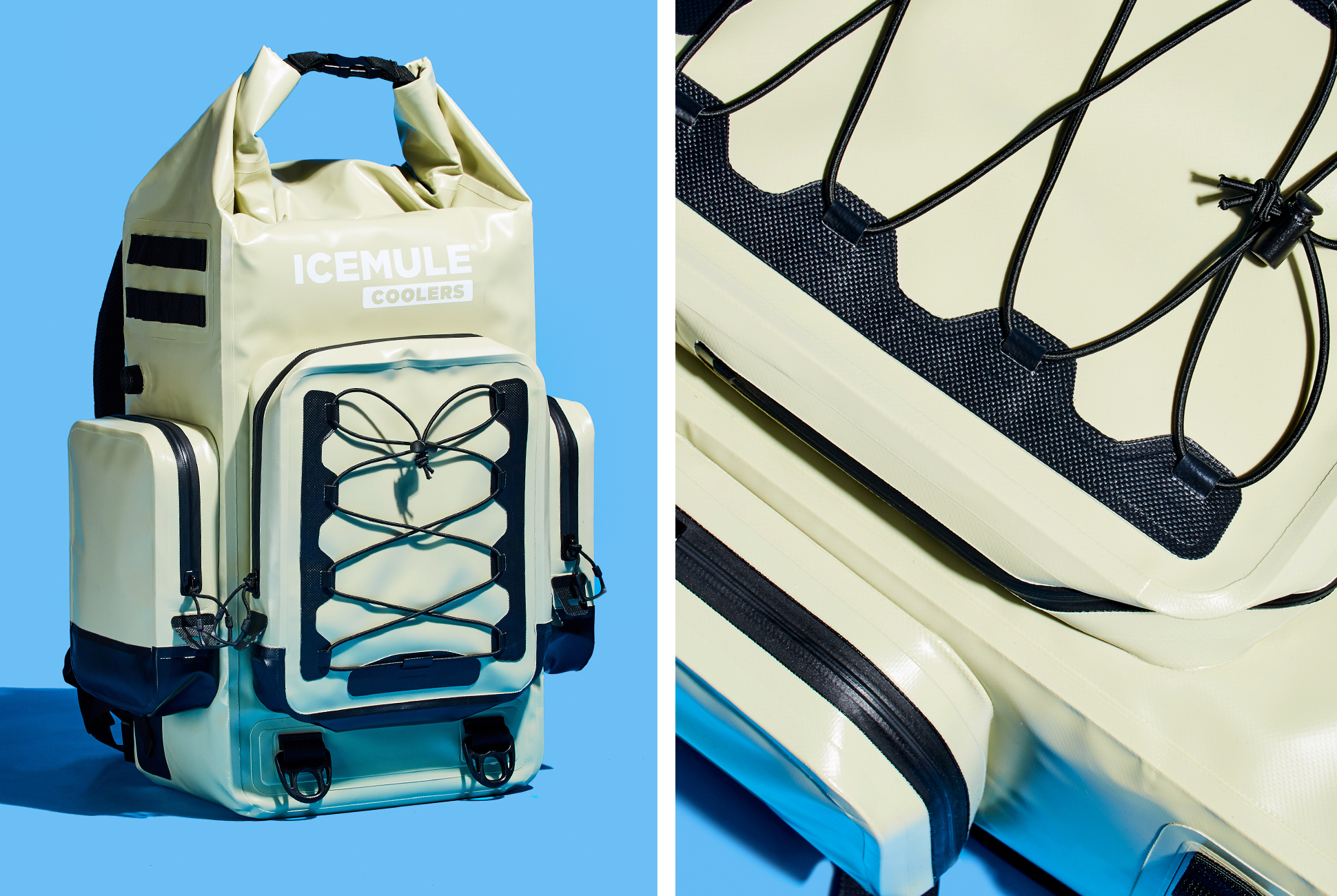
Weighing in at 7.5 pounds, this cooler is disguised as a backpack, with plenty of storage to go with it. The cooler performs surprisingly well thanks to a three-centimeter closed-cell PolarLayer XT insulation foam. The suspension system used to carry it makes it a comfortable carry whether you’re hiking into the perfect camp spot or just going from the house to your car. Reviewers love the waterproof pockets and the semi-unlimited amount of food this backpack can handle. Price point wise, it’s right in the middle of Hydroflask and Yeti’s soft side coolers, and performs on par with those heavy hitters. — Meg Lappe
Sizes available: 31.7 quarts
Pelican Soft Cooler
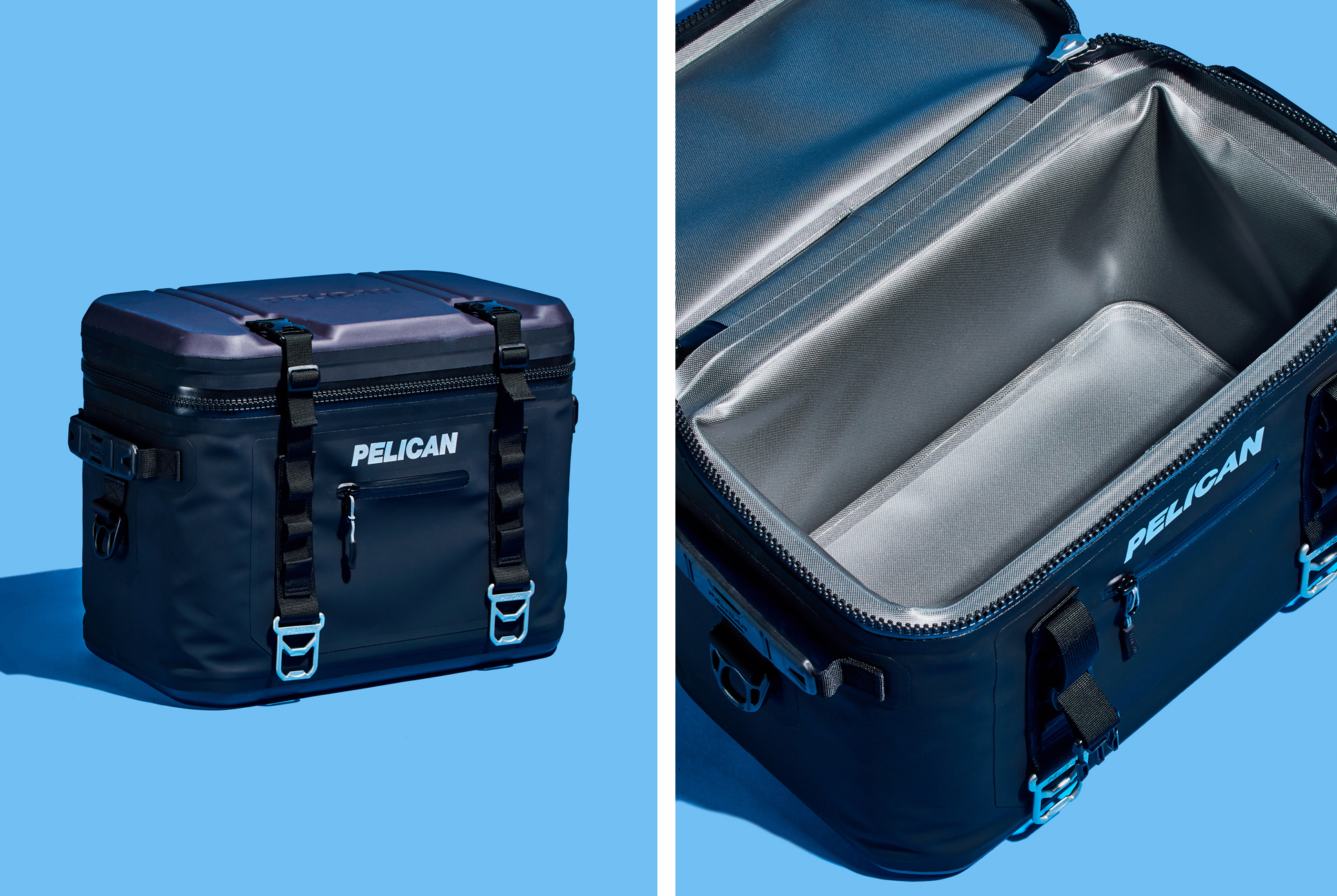
Pelican’s aptly named Soft Cooler looks similar to RTIC’s SoftPak coolers, but performs better and seems to be made of more premium materials. For instance, the zipper on the Pelican is a well-regarded TIZIP zipper, the brand used on everything from dry bags to hazmat suits. The zipper on the RTIC, on the other hand, is a less-durable generic waterproof zipper. The Pelican also features a slip-resistant compression molded base. In other words, you don’t have to worry as much about a catastrophic spill when your cooler is open and perched precariously on a rock or truck bed.
Lastly, the Pelican also comes with two compression strap buckles that tighten over the lid. So if you did happen to somehow manage to bust the zipper, you still have those to fall back on. — AJ Powell
Sizes available: 12, 24, 48
Built NY Large Welded Cooler
You can stash up to 18 cans and 10 pounds of ice in this Built NY soft-sided cooler. Built New York designs simple goods inspired by the city’s reputation: tough, industrious and stylish. The 1000-denier core with TPU coating is the same stuff you might find in a whitewater raft, and it defines durability. It’s puncture- and abrasion-proof so you can throw it in the back of a truck, bus or SUV, then hike into your secret wooded lake spot and never worry about it getting scratched or hooked by branches.
The liner is BPA-free and safe for food, and welded seams mean no leaks, even when your ice turns to mostly water. To open it, unclip its two side and single top latches, unroll the top and pull the bright yellow zipper. It’s seriously secure — no one’s going to pull a beer out of here without you knowing about it. — Meg Lappe
Sizes available: small, large, backpack
Now, Fill Them With Some Beer
Craft beer has never been more political, exciting or delicious – these are the breweries responsible. Read the Story


